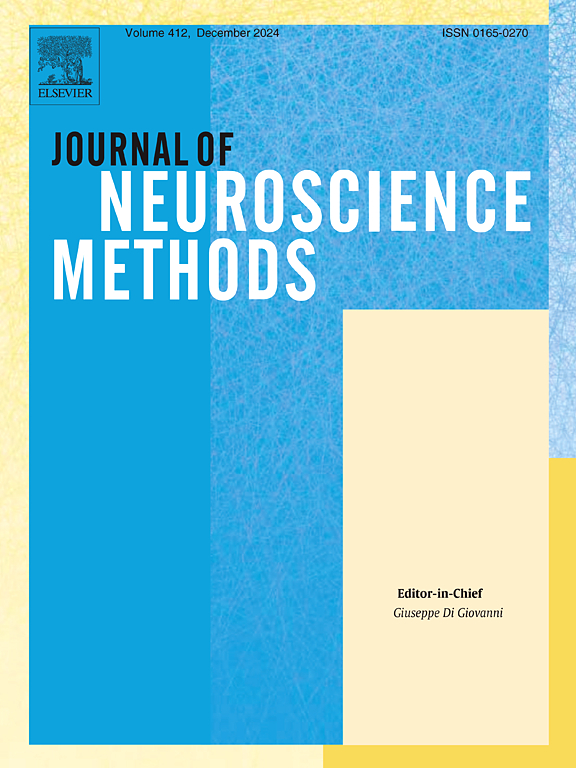一种新的自适应时间窗检测慢波-主轴耦合方法:时间共现与相幅耦合方法的比较。
IF 2.7
4区 医学
Q2 BIOCHEMICAL RESEARCH METHODS
引用次数: 0
摘要
背景:慢波-纺锤波(SW-SP)耦合对睡眠在认知中的作用至关重要。然而,现有检测方法的可靠性和有效性仍然缺乏,采用不同的方法,并且尚未进行直接比较和严格验证。本研究旨在:(1)将基于相位振幅耦合(PAC)的方法(PACTools和YASA)与用于检测SW-SP耦合的“时间共现”固定时间窗方法进行比较;(2)引入一种改进的自适应SW-SP耦合方法,通过将主轴检测与慢波半波持续时间精确对齐来提高精度和准确性。新方法:提出了一种基于慢波半波持续时间的动态时间窗的SW-SP耦合检测方法。这种方法调整到单个慢波的形态,提供与慢波波峰和波谷的主轴事件的精确对齐。结果:基于pac的方法灵敏度高,特异性低,假阳性过多。各PAC指数(MVLMI、KLMI、PLV、GLMMI)的平均f1评分为~0.45±0.01。基于西格玛波段振荡检测耦合事件的YASA显示出中等精度(0.46±0.007),f1得分为0.446±0.011,反映出由于依赖西格玛功率波动而不是离散主轴,它倾向于过度检测事件。固定时间窗方法显示出更高的特异性,每个参与者识别出533±28个耦合纺锤,但依赖于静态时间边界,导致相对于慢波峰值的平均滞后1.04±0.01秒。自适应半波方法在此基础上进行了改进,根据慢波形态动态调整检测窗口,在保持高特异性(准确度= 0.83±0.01,精密度= 0.96±0.01)的同时,将平均滞后时间降至0.15±0.007秒。与现有方法的比较:自适应方法通过将检测窗口与慢波形态动态对齐,显著提高了时间精度和特异性。完全集成到数羊PSG EEG工具箱中,它简化了主轴检测,慢波表征和耦合分析的工作流程,在易于使用的eeglab兼容环境中。结论:随着SW-SP耦合作为睡眠在认知中作用的重要指标得到认可,对标准化检测方法的需求已经变得清晰。自适应方法提供了一个健壮的、开源的解决方案,解决了标准化SW-SP耦合检测的需求。本文章由计算机程序翻译,如有差异,请以英文原文为准。
A novel adaptive time-window method for detecting slow wave–spindle coupling: Comparison of temporal co-occurrence and phase-amplitude coupling approaches
Background
Slow wave–spindle (SW-SP) coupling is critical to the role of sleep in cognition. However, the reliability and validity of available detection methods remain lacking, employ varying approaches, and have yet to be directly compared and rigorously validated. This study aimed to: (1) compare phase amplitude coupling (PAC)-based methods (PACTools and YASA) with the “temporal co-occurrence”, Fixed Time Window approach for detecting SW-SP coupling, and, (2) introduce a refined adaptive SW-SP coupling method to improve precision and accuracy, by precisely aligning spindle detection with slow wave half-wave durations.
New method
A novel SW-SP coupling detection method was developed, incorporating dynamic time windows based on slow wave half-wave durations. This method adjusts to the morphology of individual slow waves offering precise alignment of spindle events with slow wave peaks and troughs.
Results
PAC-based methods showed high sensitivity but low specificity, resulting in excessive false positives. Across PAC indices (MVLMI, KLMI, PLV, GLMMI), the average F1-score was ∼0.45 ± 0.01. YASA, which detects coupling events based on sigma-band oscillations, exhibited moderate accuracy (0.46 ± 0.007), with an F1-score of 0.446 ± 0.011, reflecting its tendency to over-detect events due to reliance on sigma power fluctuations rather than discrete spindles. The Fixed Time Window method demonstrated higher specificity, identifying 533 ± 28 coupled spindles per participant, but relied on static temporal boundaries, leading to an average lag of 1.04 ± 0.01 s relative to slow wave peaks. The Adaptive Half-Wave method improved upon this by dynamically adjusting detection windows to slow wave morphology, reducing the average lag to 0.15 ± 0.007 s while maintaining high specificity (accuracy = 0.83 ± 0.01, precision = 0.96 ± 0.01).
Comparison with existing methods
The adaptive method provides a significant improvement in temporal precision and specificity by dynamically aligning detection windows with slow wave morphology. Fully integrated into the Counting Sheep PSG EEG toolbox, it streamlines workflows for spindle detection, slow wave characterization, and coupling analysis within an easy to use, EEGLAB-compatible environment.
Conclusions
As SW-SP coupling gains recognition as an important measure of sleep’s role in cognition, the need for a standardized detection method has become clear. The adaptive method provides a robust, open-source solution, addressing the need for standardized SW-SP coupling detection.
求助全文
通过发布文献求助,成功后即可免费获取论文全文。
去求助
来源期刊

Journal of Neuroscience Methods
医学-神经科学
CiteScore
7.10
自引率
3.30%
发文量
226
审稿时长
52 days
期刊介绍:
The Journal of Neuroscience Methods publishes papers that describe new methods that are specifically for neuroscience research conducted in invertebrates, vertebrates or in man. Major methodological improvements or important refinements of established neuroscience methods are also considered for publication. The Journal''s Scope includes all aspects of contemporary neuroscience research, including anatomical, behavioural, biochemical, cellular, computational, molecular, invasive and non-invasive imaging, optogenetic, and physiological research investigations.
 求助内容:
求助内容: 应助结果提醒方式:
应助结果提醒方式:


